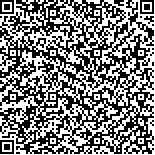| 王利民,付少童.颗粒流体系统的格子Boltzmann数值方法研究进展[J].计算力学学报,2022,39(3):332~340 |
|
| 
码上扫一扫! |
| 颗粒流体系统的格子Boltzmann数值方法研究进展 |
| Research progress of lattice Boltzmann modeling for particle-fluid system |
| 投稿时间:2022-02-23 修订日期:2022-04-23 |
| DOI:10.7511/jslxCMGM202209 |
| 中文关键词: 颗粒流体系统 格子Boltzmann方法 颗粒解析直接数值模拟 离散颗粒模拟 双流体模型 |
| 英文关键词:particle-fluid system lattice Boltzmann method particle-resolved direct numerical simula-tion discrete particle simulation two-fluid model |
| 基金项目:国家自然科学基金(51776212;91434113);国家重点研发计划(2018YFB1500902);国家数值风洞工程(NNW2020ZT1-A20);中国科学院前沿科学重点研究计划(QYZDB-SSW-SYS029)资助项目. |
|
| 摘要点击次数: 1146 |
| 全文下载次数: 445 |
| 中文摘要: |
| 介绍Euler-Lagrange框架下基于格子Boltzmann方法LBM (Lattice Boltzmann Method)发展的两种不同层次(即不同时-空尺度和精度)的颗粒流体系统离散模拟方法,即格子Boltzmann颗粒解析直接数值模拟(LB-based PR-DNS)方法和格子Boltzmann离散颗粒模拟(LB-based DPS)方法,总结了Euler-Euler框架下基于格子Boltzmann双流体模型(LB-based TFM)方面的探索研究。LB-based PR-DNS方法中颗粒尺寸远大于格子步长,能够直接解析出流体在颗粒表面的流动以及颗粒所受完整的动力学信息;LB-based DPS方法中格子步长远大于颗粒直径,其在计算精度、时间耗费和计算效率之间能达到很好的平衡,可获得流体的宏观平均流动及颗粒的运动轨迹信息。LB-based DNS和DPS是探索颗粒流体系统的有力手段,但LB-based TFM应用于模拟颗粒流体系统仍需进一步探索。 |
| 英文摘要: |
| Two kinds of discrete models are presented for modeling a particle-fluid system at different levels (different time-spatial scales and accuracy) in the framework of lattice Boltzmann method,namely lattice Boltzmann based particle-resolved direct numerical simulation (LB-based PR-DNS) and lattice Boltzmann based discrete particle simulation (LB-based DPS).The exploratory study on lattice Boltzmann based two-fluid model (LB-based TFM) in Euler-Euler framework is also reviewed.LB-based PR-DNS where particle size is much larger than lattice size,can directly resolve the flow at gas-solid interface and detailed dynamic interaction,while LB-based DPS where lattice size is much larger than particle diameter,achieves a good balance between computational accuracy,time consumption and computational efficiency,and can obtain the macro information such as time-averaged flow field,as well as the local information such as particle trajectories.Both LB-based DNS and DPS are powerful tools in exploring particle-fluid system,but further reasearch into LB-based TFM is still needed to be developed in the future. |
| 查看全文 查看/发表评论 下载PDF阅读器 |

